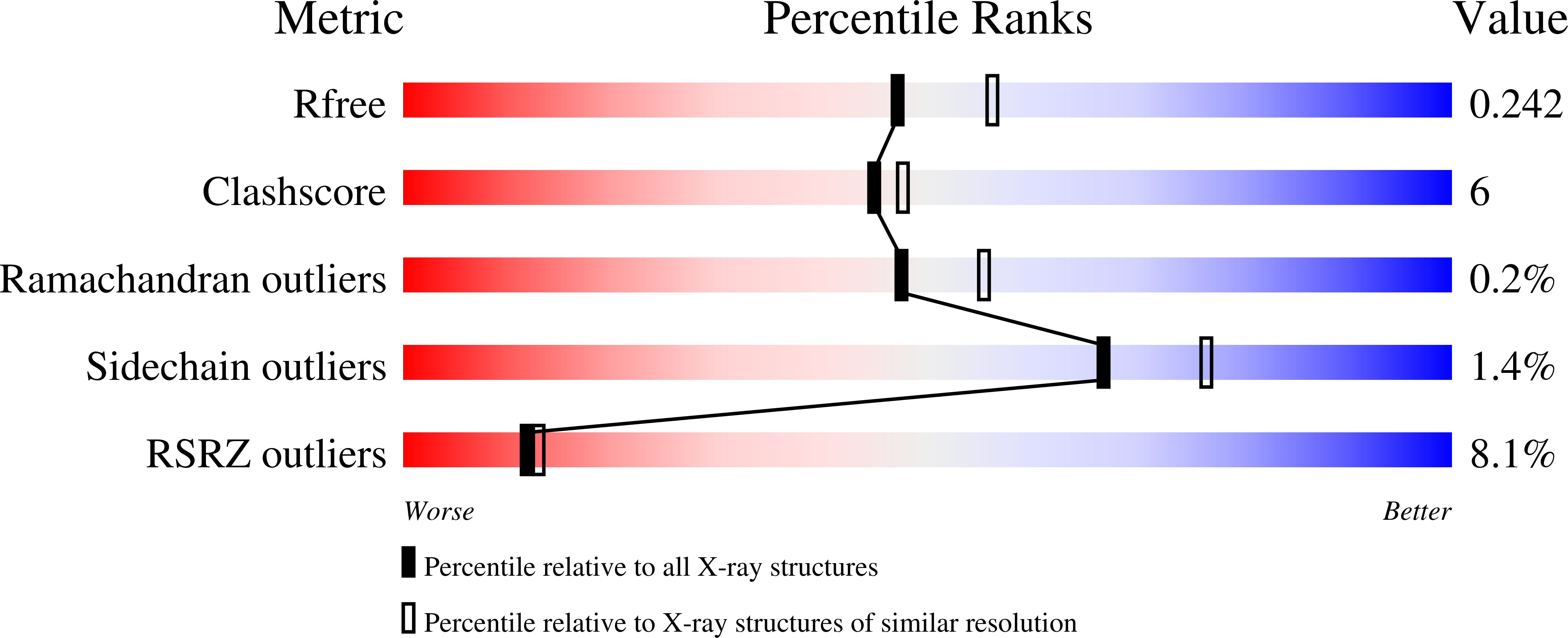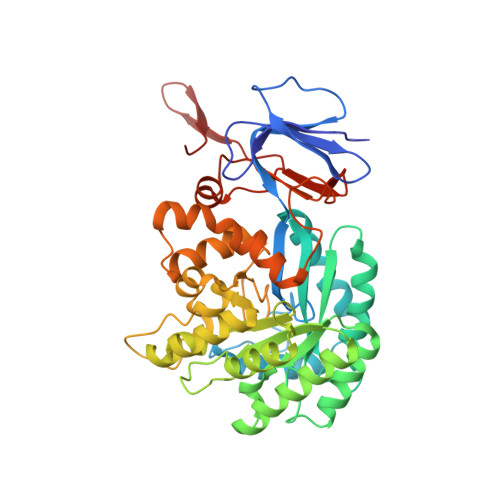Rescue of the orphan enzyme isoguanine deaminase.
Hitchcock, D.S., Fedorov, A.A., Fedorov, E.V., Dangott, L.J., Almo, S.C., Raushel, F.M.(2011) Biochemistry 50: 5555-5557
- PubMed: 21604715
- DOI: https://doi.org/10.1021/bi200680y
- Primary Citation of Related Structures:
3RN6 - PubMed Abstract:
Cytosine deaminase (CDA) from Escherichia coli was shown to catalyze the deamination of isoguanine (2-oxoadenine) to xanthine. Isoguanine is an oxidation product of adenine in DNA that is mutagenic to the cell. The isoguanine deaminase activity in E. coli was partially purified by ammonium sulfate fractionation, gel filtration, and anion exchange chromatography. The active protein was identified by peptide mass fingerprint analysis as cytosine deaminase. The kinetic constants for the deamination of isoguanine at pH 7.7 are as follows: k(cat) = 49 s(-1), K(m) = 72 ¦̀M, and k(cat)/K(m) = 6.7 ¡Á 10(5) M(-1) s(-1). The kinetic constants for the deamination of cytosine are as follows: k(cat) = 45 s(-1), K(m) = 302 ¦̀M, and k(cat)/K(m) = 1.5 ¡Á 10(5) M(-1) s(-1). Under these reaction conditions, isoguanine is the better substrate for cytosine deaminase. The three-dimensional structure of CDA was determined with isoguanine in the active site.
Organizational Affiliation:
Department of Biochemistry and Biophysics and Department of Chemistry, Texas A&M University, College Station, Texas 77843, USA.

















